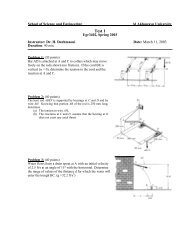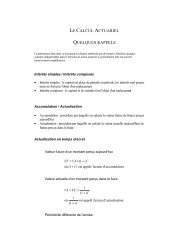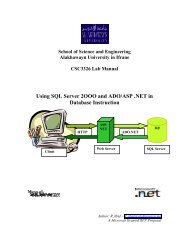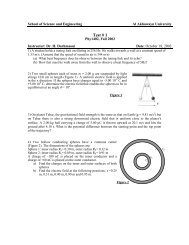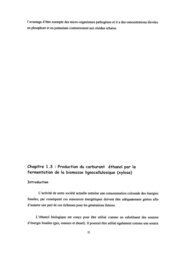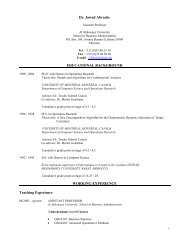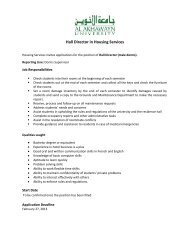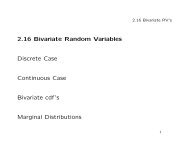Leadership and Values in Language Education - Al Akhawayn ...
Leadership and Values in Language Education - Al Akhawayn ...
Leadership and Values in Language Education - Al Akhawayn ...
- No tags were found...
Create successful ePaper yourself
Turn your PDF publications into a flip-book with our unique Google optimized e-Paper software.
110Proceed<strong>in</strong>gs of the 27 th MATE Annual ConferenceBy def<strong>in</strong>ition, with<strong>in</strong> this perspective comm<strong>and</strong> <strong>and</strong> control are the essence ofmanagement <strong>and</strong> leadership <strong>in</strong> that organizations tend to be too structured, that is,all the power is given to the formally appo<strong>in</strong>ted leader, who tends to controlth<strong>in</strong>gs too much <strong>and</strong> whose rights as a legitimate leader have direct <strong>in</strong>fluence onhis subord<strong>in</strong>ates, who are consequently subject to some strictly def<strong>in</strong>edobligations. In other words, members of an organisation or group are eitherleaders, whose role is to “make strategic decisions effectively” (Northhouse,2001), or followers, who are broken away from the process of mak<strong>in</strong>g decisions<strong>and</strong> who must adjust to their behaviours <strong>and</strong> practice to strictly execute thedecisions <strong>and</strong> orders imparted from above by the formally appo<strong>in</strong>ted leader. Thisrelationship of followship is established <strong>and</strong> ma<strong>in</strong>ta<strong>in</strong>ed through a rigidhierarchical <strong>and</strong> vertical distribution of power particularly its concentration <strong>in</strong> theh<strong>and</strong>s of the legitimate leader, <strong>and</strong> through restricted one-way structure ofcommunication. This pattern of leadership has long been established <strong>and</strong> deeprooted<strong>in</strong> organizations <strong>and</strong> organizational <strong>and</strong> <strong>in</strong>stitutional practice. In thisrespect, Pearce <strong>and</strong> Conger (2003:2), for example, state that “historically,leadership has been conceived around a s<strong>in</strong>gle <strong>in</strong>dividual – the leader – <strong>and</strong> therelationship of that to subord<strong>in</strong>ates or followers. This relationship between theleader <strong>and</strong> the led has been a vertical one of top-down <strong>in</strong>fluence”.However, this approach to leadership has recently been questioned <strong>and</strong>challenged for its neglect of different situational factors that may come <strong>in</strong>to playto <strong>in</strong>fluence the effectiveness of work organisation <strong>and</strong> performance.Additionally, this focus on a s<strong>in</strong>gle <strong>in</strong>dividual leader does not respond to thegrow<strong>in</strong>g need for multi-functional <strong>and</strong> cross-cultural team-work <strong>and</strong> small-groupwork as an organizational unit of effective work organisation <strong>and</strong> performance.Therefore, a new form of leadership emerged reflect<strong>in</strong>g the need for leadership tobe shared or distributed among members of organizations <strong>and</strong> small groups. Thisform of leadership is widely referred to as shared leadership, mutual leadership,or distributed leadership. Below, this model of leadership is generally def<strong>in</strong>ed <strong>and</strong>some of its pr<strong>in</strong>ciples are presented <strong>and</strong> discussed.1. 2. Shared leadershipShared leadership is a recently emerg<strong>in</strong>g form of leadership that st<strong>and</strong>s <strong>in</strong> sharpcontrast to the comm<strong>and</strong>-<strong>and</strong>-control style of leadership. It is generally def<strong>in</strong>ed asa recent conceptualization of leadership as “a dynamic <strong>in</strong>teractive <strong>in</strong>fluenceprocess among <strong>in</strong>dividuals <strong>in</strong> groups for which the objective is to lead oneanother to the achievement of group or organizational goals or both” (Pearce <strong>and</strong>Conger, 2003:2). This approach to leadership is based on the pr<strong>in</strong>ciples that





